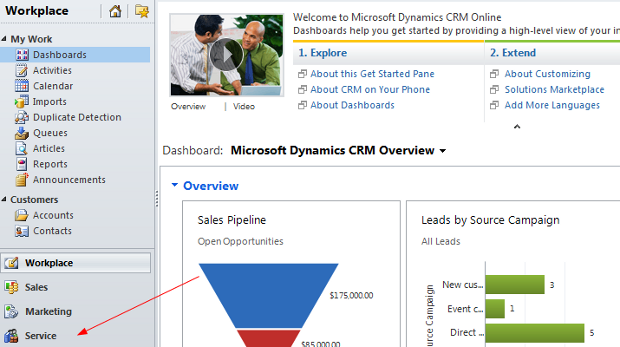iWork isn’t a CRM app in itself, but it can
be a powerful aid in communications
Over the past few weeks I’ve reviewed lots
of ‘customer relationship management’ (CRM) applications. (You’ll see the
results in an upcoming issue of MacUser.) I looked at a handful of what must be
dozens of competitors. It’s clear that CRM represents a huge software growth
area, even though it covers, essentially, a simple idea: helping businesses
manage customer communications and workload.
In fact, it’s such a simple explanation
that when I started testing these apps, I had the naïve idea that it might be
possible for many CRM functions to be handled by iWork and other built-in Mac
applications.
However, I was soon put right. While I
might suffer under the impression that I operate a customer relationship
management workflow of sorts by keeping invoices neatly organized in Numbers
and my contacts organized in Address Book groups, that’s a shadow of the
capabilities of CRM apps, which can carry a lot more information about
potential and existing clients and can also track possible sales opportunities
and plan projects. All of these elements can be linked to help a business work
more smoothly or show a sales pipeline that can predict how many sales they’re
likely to pick up in the future.
It’s fair to say that Address Book doesn’t
seem quite so powerful under these circumstances.
Nevertheless, while iWork might not qualify
as a genuine standalone CRM application, it can still tie in with those
programs to enhance what they do. Most CRMs have built-in mail-merge tools to
allow them to send emails to particular subsets of their customers. But what if
you wanted to send a customized newsletter to your longest-standing clients, or
those with whom you hadn’t been in contact for a while? iWork, and in
particular Pages, can create bespoke documents based on customer data held in a
CRM application.

iWork,
can create bespoke documents based on customer data held in a CRM application
I realized that iWork could be useful as
soon as I noticed that just about every CRM application could export its
customer and project data to spreadsheet format. Daylite 4 (marketcircle.com)
and Salesforce (sales-force.com), for example, can export contacts, projects
and opportunities (potential sales) to a spreadsheet.
Obviously, Numbers can open spreadsheet
files, and one of the great underused features of Pages ’09 is its ability to
grab data from a Numbers table as the basis for a mail merge, so you can create
customized letters, great-looking reports or PDF newsletters with a Page Layout
Pages document.
As an aside, it’s a little awkward to get
data out of Salesforce, although the amazing flexibility of the reports means
that you can get highly customized information out of the app. You first need
to generate a report in Salesforce and then export that to a .C SV file. This
will probably open the exported file inside your browser’s window. Choose File
> Save As to save the CSV file to your desktop and then open it in Numbers.
The imported data will appear in the Numbers spreadsheet, but won’t have any
named header columns, so you’ll have to add these so that Pages’ mail merge
feature will recognize those columns as valid merge fields. You can turn the
topmost row into a series of header columns by clicking on the disclosure arrow
at the left of the row and choosing Convert to Header Row from the pop-up menu.
Once The Data is in Numbers, Pages can use it. Choose the Merge tab in Pages’
Link Inspector and select the Numbers document as the import option. Select the
table with the imported data and start adding merge fields by selecting the
text in the document that you’d like to replace with the merged text. Select
Add Merge Field from the pop-up list at the bottom of the Link Inspector window
and choose a field from the Numbers database to use as the merge field.

While you can customize the data you export
from inside the CRM app, it’s also possible to customize the mail merge so that
only certain records are imported. That might be handy if, for example, you
wanted to send your newsletter only to contacts with whom you hadn’t
communicated over the last year. Alternatively, you could take advantage of one
of the more useful features of the better CRMs – the ability to add custom
fields to contacts, opportunities or projects – to filter the mail merge by
that field. Pages lacks a conditional mail merge function, which would make
this process easy, but you can get around this using Numbers’ ability to hide
rows of data according to specified rules. Moreover, because rows that are
hidden in Numbers are ignored by Pages’ mail merge, rows filtered out in
Numbers won’t appear in the final mail merge.
To hide contacts that don’t match
particular criteria in Numbers, select the table and open the Reorganize Table
window by clicking the Reorganize button in the toolbar. Under the ‘Show rows
that match the following’ heading, choose the column that you’d like to filter
by – this will be the ‘Date of Last Contact’ column – and under the criteria
choose to show only rows whose date is before the date 01/01/2012. This should
hide any contacts with whom you’ve recently been in touch.
One slight irritation when it comes to Pages’
mail merge is it isn’t very clear where the mail merge fields are in the
document. As Pages’ merge fields use the same name as the column headings in
the header row of the source Numbers document, all you need to do is surround
those column headings with identifying characters, such as asterisks, so that
an ‘Account Name’ merge field will appear as *Account Name* in the Pages
document. It makes it much easier to spot.